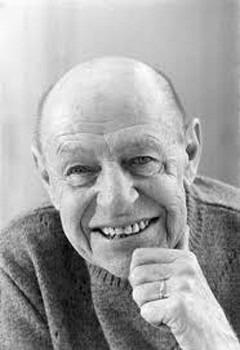

(Le Havre, 1901 - Paris, 1985)

Jean Dubuffet was born in 1901 in Le Havre into a wine dealer family. He took drawing lessons in his childhood and in 1918 he moved in Paris with his friend Georges Limbour to study at Julian Academy. Yet, he abandoned the academy six months later to work independently. By this time, he had met Raoul Dufy, Max Jacob and Suzanne Valadon. From 1920 to 1922, he lived a solitary life, dedicated to philosophy and music. Speaking about this period, the artist said: “after high school, I studied painting for six or seven years, and many subjects: poetry, literature, metaphysic, palaeography, ethnography, foreign languages, ancient languages, I searched the Entry”.
After his military service, he met Fernand Léger and André Masson. Dubuffet began more and more sceptical towards “beaux-arts” and decided to abandon painting. He went six months to Argentina and then returned to Le Havre in 1925 in order to take up functions in the family business. He got married and settled in Paris where he opened his own wine business in Bercy. In 1933, he tried again to dedicate himself to painting but was forced to renounce in 1937 to save the familial business. Autumn 1942 marked his career: he decided to devote his time to painting. Despite his late artistic beginnings, international success and recognition was almost immediate. Since 1944, he presented his first solo show at the Parisian gallery René Drouin. Since 1945, he started collecting Art Brut, a term that describes art created outside the boundaries of the official culture. Author of many publications, he founded Art Brut Company in 1948 and reunited an important collection of artworks realised by mentally ill and other non-conformist people.
The evolution of his career could be separated in three steps: first his exploitation of the 1940’s – with incorporation of materials unusual for art, then l’Hourloupe of the 1960’s and 1970’s, and finally his gestural art of the 1980’s.
The first part opens with les Marionettes de la ville et de la Campagne and extends with series Matériologies until end of the 1950’s. At this time, his style is in opposition to what traditional French artist could paint. His style seriously shakes conventional painting and aesthetic rules. Some series illustrate life of “common man”, as travellers in the series Urban and Rural Puppets, and intensive research on materials landscapes free of humans in Matériologies.
The second step starts with the cycle Paris Circus dated beginning of the 1960’s. His simple descriptions of animated life confirm his idea that everyone could make art. His paintings serve as transition toward his next series l’Hourloupe (1962 – 1974). With its thick lines and its restricted palette, l’Hourloupe creates a parallel world with modular compartments. Dubuffet works his subject through homogeneous fragments, reminding cell structures, with hatched shadows of variable intensity. Theses works evolve until transforming into in theatre decoration and costume, or monumental sculptures and architecture. For Coucou Bazar, the creative summit of l’Hourloupe, Dubuffet created hundreds of practicable (mobile cuttings) (1972–1973): it was a projection animated on stage by actor wearing costumes (masks, hats, capes, glove and shoes). Coucou Bazar was only presented three times: in 1973 at Solomon R. Guggenheim of New York, a few months later at Grand Palais in Paris and in 1978 in Turin.
The last ten years of his prolific career are illustrated by five series: Memory Theatre (October 1975 – August 1978), Shorts Exercises (March – December 1979), Psycho – Sites (1981), Mires (February 1983 – March 1984) and Non–Lieux (March - December 1984). Creating theses series, Dubuffet diverts from representations and materials that were at the centre of his last creations. His line became less intentional. His last series, Non–Lieux, he erases any reference with the physical world, and reduced the piece to pure gesture of painting.